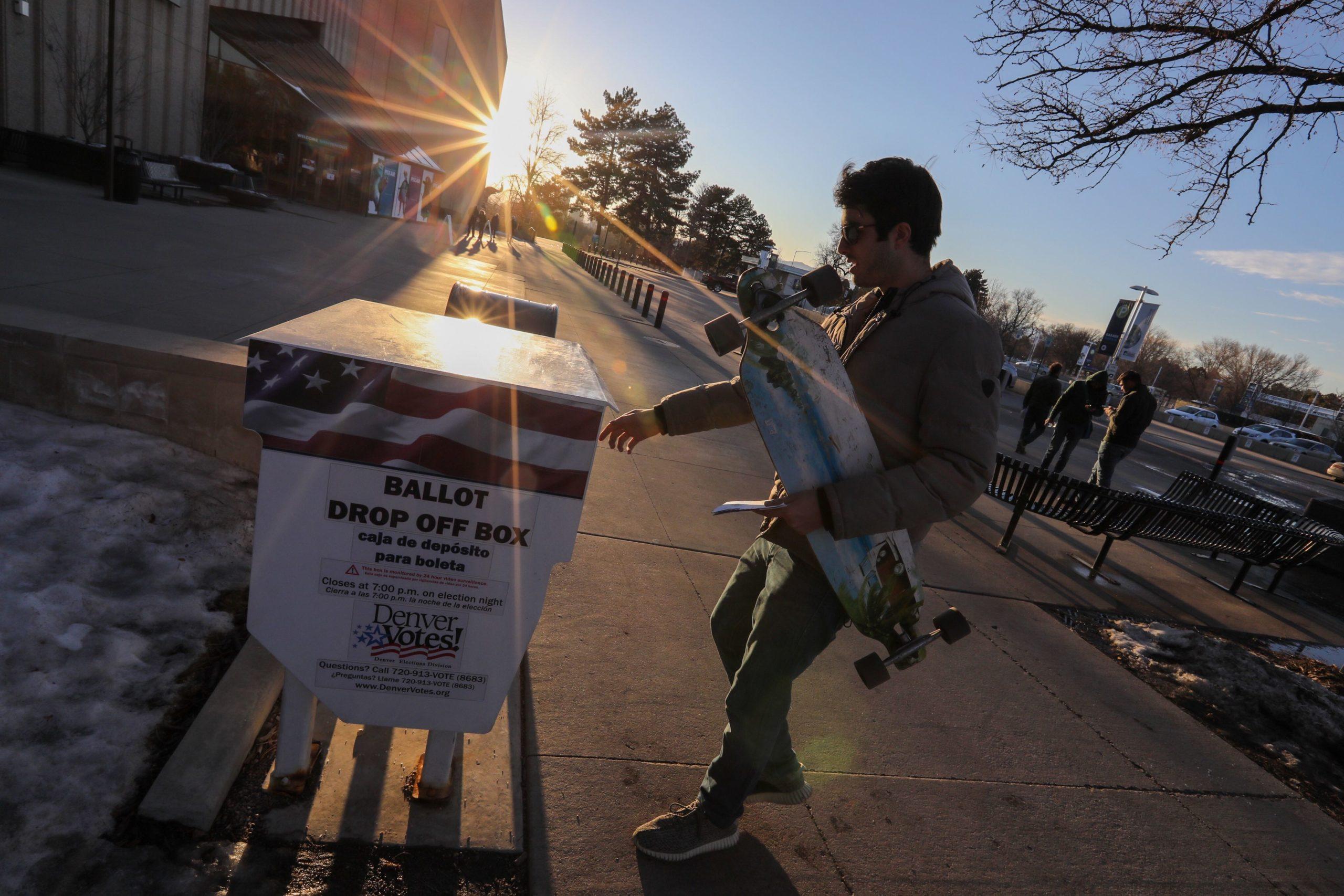
Voters in masks spread out in a line that stretched for blocks. Poll workers covered head to toe in protective gear. These were some of the scenes from Wisconsin last week, where voters headed out to a primary election in the middle of a pandemic.
The new coronavirus has put a spotlight on voting. Or more to the point, alternatives to voting in person, so people aren’t forced to choose between their ballot and their health.
The issue has become partisan on the national level. President Donald Trump weighed in on the debate when he said that “mail-in voting is a terrible thing. I think you vote, you should go.”
Despite Trump’s comments, more states — red, blue, and purple — are rethinking voting in person. And many of those states look to Colorado, which went to all-mail ballots in 2013, as a model.
Colorado Secretary of State Jena Griswold said the issue is simple. If you create access for voters you also create participation. That change has paid off today.
“The fact that we have mail ballots sent to everyone who is registered, that we have mail ballots sent to everyone who is registered, that we have early voting and in-person voting really enables us to observe social distancing in an unprecedented way,” Griswold said.
At the national level, debate swirls around whether all states should enact measures to make it easier to vote by mail in the fall. States may be able to postpone a primary, but not a general election — especially one where the presidency is on the ballot. Already, according to Griswold's office, around a third of the states have contacted Colorado in recent weeks and sought advice on how to expand mail-in voting.
For most, Griswold said, it’s not about reinventing the wheel.
“Thirty-six states already offered no excuse, absentee mail ballot. We have the foundation and now we have to expand on it,” Griswold said. “And Colorado will always be there to help.”
In general terms of partisanship, Democrats say that mail ballots increase access, while Republicans warn of fraud. Amber McReynolds, head of the Denver-based group Vote-At-Home, said it’s about voters.
“It’s certainly disappointing whenever I see politicians try to politicize the elections process because it shouldn’t be,” she said. “It should be about who votes, not who wins.”
A number of red states have followed Colorado's model, like Utah, or successfully implemented partial mail-in voting like Nebraska or North Dakota. States have continued to reach out to McReynolds’ organization to get advice about vote by mail. And as November gets closer, she said the clock is ticking.
“You have to have equipment. You have to be prepared in advance and this isn’t something that you can just flip a switch and have a different election model come the fall,” she said. The prep work needs to start now.
Former Colorado Secretary of State Wayne Williams knows this all too well. The Republican helped enact the system the state has today. And one of the biggest challenges he sees toward all 50 states having mail-in voting by the fall is the supply chain. You know the problems states have had getting masks or ventilators, it would also apply to ballot printers.
“There's a limited capacity with respect to the printing, with respect to the quality control, with respect to all of these issues that probably make it so logistically it would be very difficult for the entire country to move to such a system by the fall,” he explained.
Add to that new regulations, updating address and signature databases, adopting risk limit audits and ensuring it all falls within the ballot guidelines of your state constitution.
It can be done, Williams said, but it’s more complex than just mailing a ballot. With the tight timeframe, he’d start simpler and make sure high-risk individuals can vote by mail. It can be done “by changing some of the absentee ballot rules,” he said. “And that’s where I’d begin.”
And a pandemic isn't the only reason you can't always vote in person — everything from natural disasters to long lines at polling places can make people want to vote from home.
Security is a legitimate concern, Williams agreed, but when mail-in voting is done right, he said, it’s safe.
“That means you’re comparing signatures. You’ve got an accurate database of where people live, it means you’re accurately maintaining that database, you’re removing individuals who have passed away, who have moved,” he explained.
It also means monitored drop boxes, tracking ballots and bipartisan judges picking up ballots.
“If you take all of those steps, you can have a mail ballot election that is very safe.”
Even if states are on board with a move to mail ballots, the change takes money — a lot of it. Congress has already approved $400 million in election grants for states to prepare for the possible impact of coronavirus this fall, money they could use to expand mail voting.
Stan Veuger, a resident scholar at the American Enterprise Institute, a conservative think tank, said the funding is important “especially now that so many state budgets are under tremendous pressure because of the economic downturn we're also in.”
However, Democrats and elections experts say much more money is needed. That sets up yet another political battle in Congress.
Ultimately, many experts argue elections are a state responsibility, which is why many states now look to places like Colorado — to see what is and is not possible come this fall.









